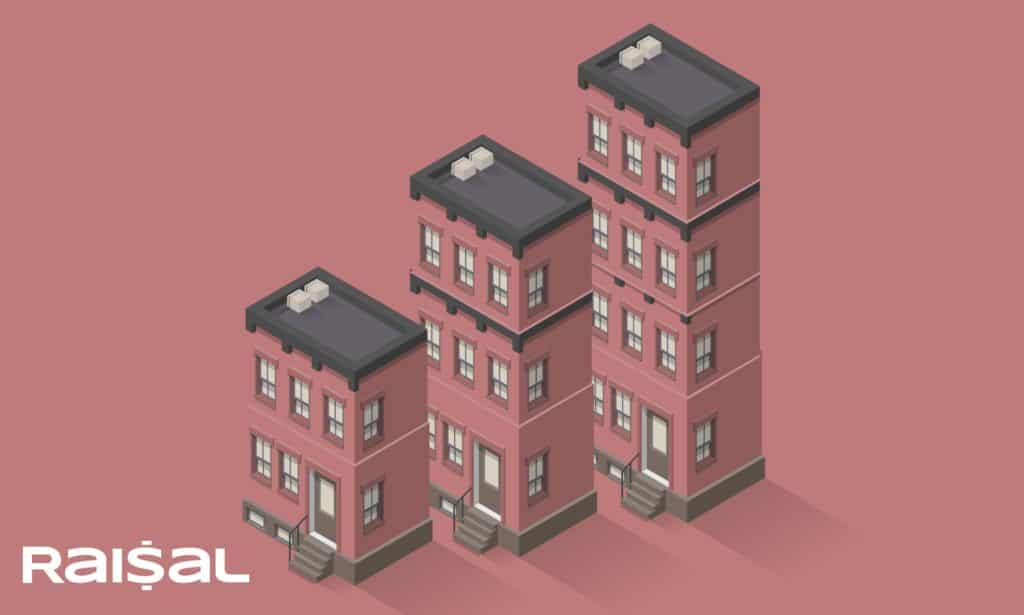[ad_1]
Given the rise in property values over the years, you likely have a large built in gain on any investment real estate that you own. As such, you’ll be in for a big capital gain tax liability when it comes time to sell the property.
Have no fear – you may be able to defer that gain using a 1031 exchange!
In this post, we’ll discuss how to use a 1031 exchange to defer capital gains taxes due upon the sale of an investment real estate property. We’ll also discuss how you can use debt to leverage your money and create greater returns.
The Process Of A 1031 Tax Deferred Exchange
A 1031 exchange (also known as a Starker exchange), refers to Section 1031 of the IRS Revenue Code. This code allows exchanges of one property for another to proceed without the immediate recognition of capital gains or losses due upon sale. 1031 exchanges are common in real estate but can pertain to other investments and personal property in specific situations.
It is best to think of this exchange as a non-simultaneous transfer of property. As the investor is simply trading one property for a “like-kind” investment, the IRS recognizes that there is nothing additional the investor receives that can be taxed.
To qualify, investors must engage a “qualified intermediary,” which is the entity that facilitates a 1031 exchange (think transfer agent). After stating the intention of entering a 1031 exchange in a sale of property, the Qualified Intermediary will become the principal of the exchange, providing assistance in following IRS guidelines throughout the transfer.
Once a replacement property is identified and agreed upon by all parties, the Qualified Intermediary will forward the proceeds from the sale of the old investment through a separate bank account in order to fund the new acquisition. When this is completed, all the taxpayer needs to do is file an 8824 form with the IRS, and complete any subsequent state forms that are required.
Note that the proceeds from any sale are required to go directly towards a replacement property or investment in order for a 1031 exchange to work. The costs of purchasing, such as due diligence cost or closing costs, can be paid with funds from a 1031 exchange. If the investor acquires the replacement property and decides to sell it or cash out, this will trigger the income tax they owe on their capital gains.
An exchange does not need to take place immediately. However, a replacement property must be designated in writing within 45 days of the initial property sale. This narrow time frame can be disadvantageous without careful planning and consideration with trusted advisors.
Leverage Returns By Using Debt To Returns
There are several ways to maximize your return on the replacement properties you target for a 1031 exchange.
One simple method is to use the proceeds from the sale of your property as a down payment for the replacement property. This can fulfill as little or as much of the purchase price as you would like. The remaining purchase proceeds are financed.
For example, suppose you have a $500,00 sale, you can use that $500,000 as the 20 percent down payment on a $2.5 Million purchase. This allows you to increase your returns versus a non-levered transaction. Here’s how:
Suppose you use your 1031 proceeds to purchase a $500,000 property that is yielding an 8% CAP rate. That would provide you with $40,000 in annual income.
However, suppose you instead allocated that $500,000 as the 20% down payment of the acquisition of a $2.5 Million property yielding the same 8%. Assuming a $2 Million principal, 4.5% rate, and a 30-year amortization (pretty typical for a small balance Fannie Mae deal in today’s market), then your monthly loan payment is $10,134, which annualized is $121,608.
Total gross income is $200,000 (8% x $2.5 Million). Net cash flow to you is $78,392. Thus, by using leverage, you were able to nearly double your annual cash flow.
You also have additional benefits by way of increased depreciation deductions. In sum, leveraging provides higher returns. The counter, though, is that it adds greater risk since you now have a large liability in the form of a mortgage.
You must, therefore, consider all of the risks and be comfortable with those risk before your proceed.
Limitations To 1031 Exchanges
The proceeds from the sale of the property may be used for other related costs, such as real estate broker and finder’s fees, fees for an attorney or Qualified Intermediary, and the owner’s title insurance premiums.
The proceeds cannot, however, be used for things such as lender origination fees or points, mortgage broker fees, loan payments, security deposits, or prorated property taxes and rent.
The 1031 exchange rules allow you to select up to three replacement properties. You can acquire just one or all three. If an investor wishes to identify more than three properties, they may select additional investments, as long as they do not exceed 200 percent of the fair market value of the sold property.
Explore the options available to you with trusted tax and legal advisors. Effectively navigating the 1031 exchange waters can be tricky without them, even if you are successful in identifying attractive properties. Better to be prepared than to be caught off guard with issues that are foreseeable.
Sourcing Debt
Finding a lender can be painstakingly slow, extremely frustrating, and could derail your deal to the extent you need to move fast.
Some investors have ready access to lenders because of prior relationships. However, most investors do not. That is where a lender sourcing tool like Raisal, a marketplace that provides access to multiple lenders, can be extremely valuable. With the click of a button, our interactive, online platform instantly connects you with lenders that are algorithmically matched to fit your specific needs. Let them compete to win your business, and get the advice you deserve to succeed.
This article originally appeared on raisal.com.
[ad_2]
